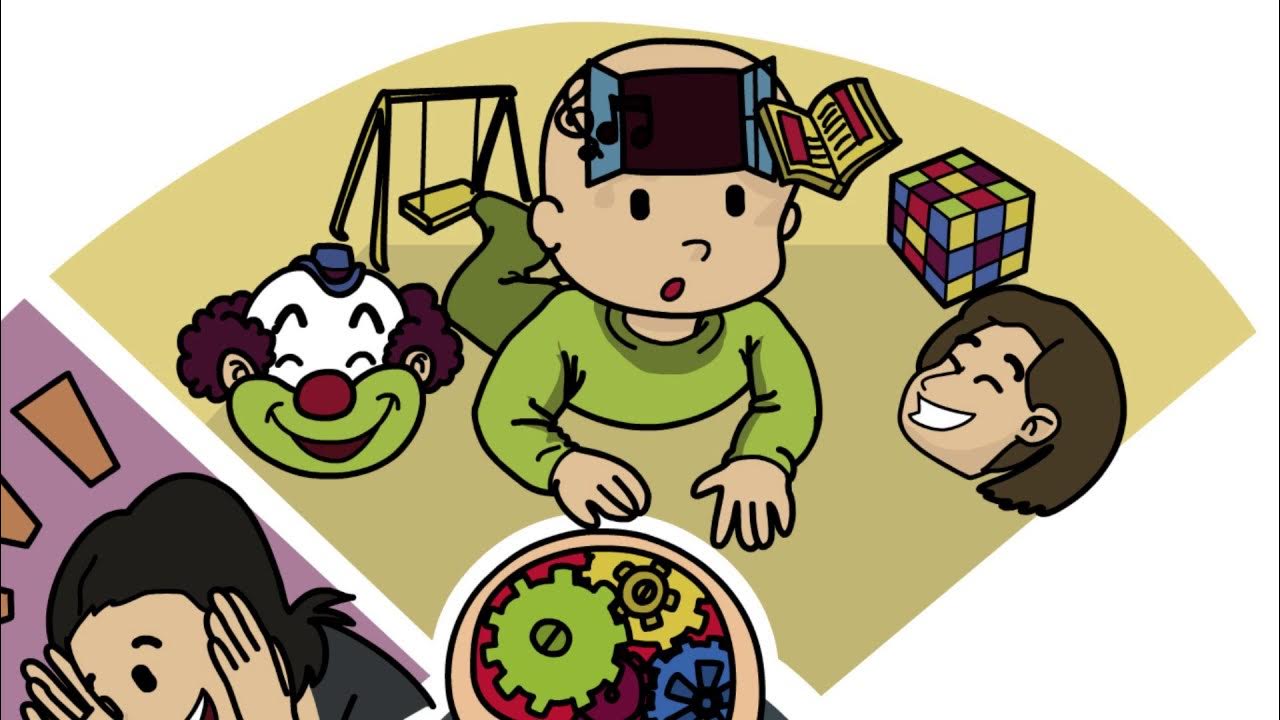Curriculum Development - An Introduction
Summary
TLDRThis video script emphasizes the importance of an effective curriculum in early childhood education, focusing on the whole child's development. It highlights the need for a curriculum that is organized, responsive, research-based, and dynamic, balancing planned and emergent activities. The script showcases teachers' strategies for engaging children, assessing their skills, and incorporating cultural diversity and dual-language learning. It also underscores the significance of social-emotional learning and the integration of various learning domains.
Takeaways
- 📚 Curriculum is a comprehensive framework that includes learning goals, concepts, skills, teaching strategies, and instructional methods for children.
- 🌟 An effective curriculum is organized, intentional, responsive to children's needs, research-based, and dynamic.
- 🧩 It integrates planned and emergent activities to foster the holistic development of children in cognitive, physical, linguistic, social, and emotional aspects.
- 🏆 The National Association for the Education of Young Children outlines several key features of an effective curriculum.
- 👶 Tailoring the curriculum to meet individual children's skill levels and building upon them is crucial.
- 🤔 Observations play a vital role in curriculum planning, identifying areas where children need more support or growth.
- 👨👩👧👦 Engaging children by making the curriculum interesting and relevant to them is key to their active participation.
- 🌐 Incorporating real-life, culturally diverse, and multilingual elements into the curriculum enriches the learning experience.
- 👥 Social-emotional learning is a significant component of early childhood education, focusing on expressing feelings appropriately and building relationships.
- 🎨 Learning domains are interconnected; activities often meet multiple learning standards across different domains.
- 📈 Regular curriculum meetings and assessments, such as the GOLD system, help in refining the curriculum to better suit children's evolving needs.
Q & A
What is the definition of curriculum in the context of early learning?
-Curriculum in the context of early learning is a framework that identifies learning goals for children, concepts, and skills to be taught, along with teaching strategies and instructional methods.
What are the key characteristics of an effective curriculum?
-An effective curriculum is organized, intentionally implemented, responsive and reflective of children, research-based, and dynamic.
How does curriculum integrate into various aspects of an early learning program?
-Curriculum is woven into all activities and routines and informs all aspects of an early learning program, including environmental design, materials, schedule, assessment, and program evaluation.
What balance does an effective curriculum aim to achieve?
-An effective curriculum aims to balance planned activities with emergent activities.
How does the curriculum focus on the development of the child?
-The curriculum focuses on the development of the whole child, including cognitive, physical, linguistic, social, and emotional development.
What does the National Association for the Education of Young Children identify as features of effective curriculums?
-The National Association for the Education of Young Children identifies several features of effective curriculums, which are considered when designing a curriculum.
How do early childhood professionals adapt the curriculum to meet individual children's needs?
-Early childhood professionals adapt the curriculum by first understanding the children's current skills, then building upon those skills and ensuring the curriculum is interesting and engaging for the children.
What is the importance of observing children's progress and development?
-Observing children's progress and development is crucial for planning and adjusting the curriculum to meet their needs, as well as for designing activities that support their growth.
How do teachers involve parents in the curriculum?
-Teachers involve parents by sending notes home to inform them of the focus areas and seeking their input on how to work together to support the child's learning.
What is the approach to curriculum development for infants?
-For infants, the curriculum development must be flexible and sometimes compromised due to the unpredictable nature of young children, with the primary goal being love, care, and attention to their needs.
How do teachers ensure that the curriculum is culturally inclusive?
-Teachers ensure cultural inclusivity by connecting culture to individual people, representing various cultures in the classroom, and making an effort to include dual-language learners and their unique experiences.
What role does play-based learning play in the curriculum?
-Play-based learning is central to the curriculum, providing hands-on opportunities for children to learn through socializing, communicating, and engaging in activities that are developmentally appropriate.
How do teachers reflect on the curriculum and children's progress?
-Teachers reflect on the curriculum and children's progress by observing daily activities, using assessment systems like GOLD, and holding curriculum meetings to discuss observations and plan adjustments.
Outlines

このセクションは有料ユーザー限定です。 アクセスするには、アップグレードをお願いします。
今すぐアップグレードMindmap

このセクションは有料ユーザー限定です。 アクセスするには、アップグレードをお願いします。
今すぐアップグレードKeywords

このセクションは有料ユーザー限定です。 アクセスするには、アップグレードをお願いします。
今すぐアップグレードHighlights

このセクションは有料ユーザー限定です。 アクセスするには、アップグレードをお願いします。
今すぐアップグレードTranscripts

このセクションは有料ユーザー限定です。 アクセスするには、アップグレードをお願いします。
今すぐアップグレード5.0 / 5 (0 votes)






